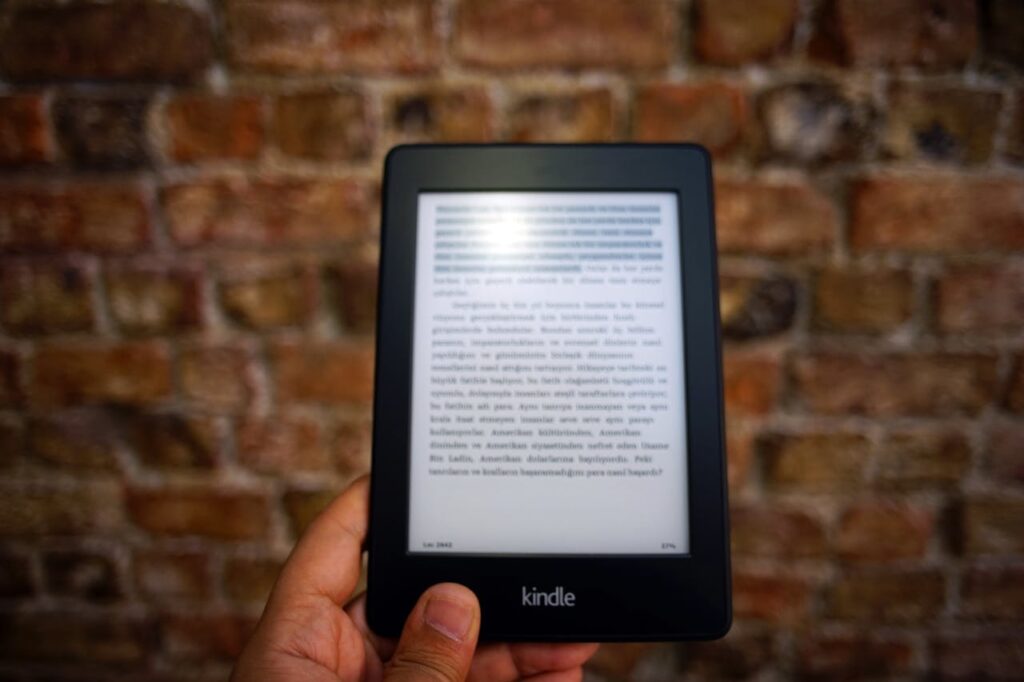Imagine you walk into a bookstore or look through an online bookshop, and the absolute variety of formats hits you.
Do you want to read hardcover, paperback, Kindle, PDF, or audiobook? How does one even start? Don’t worry, we’re here to help you navigate these choices. This blog will make this decision easy on you, as we will dissect the physical and digital formats—mainly hardcovers, paperbacks, and digital editions.
Note: “No matter if it’s a hardcover, paperback, or eBook, the story inside is the same. It’s like different covers for the same chocolate bar.”
There are two main types of book formats:
- Physical books: These are the traditional books you can hold in your hands.
- Digital books: These are electronic versions that you can read on devices like e-readers, tablets, or smartphones.
Physical Editions: More Than Just Covers
Hardcover: Hardcover books are the epitome of durability and elegance. They are bound in rigid covers, hence durable and typically considered collectors’ items. Although relatively costly, when compared to the touch and quality that come with a classic book, most readers regard it as an investment.
- Durable, long-lasting: perfect for books you want to keep forever.
- Often treasured and displayed: higher price point.
- Quality investment.
- Fun fact: The first hardcover book was produced in the 15th century!

Paperback: Paperbacks hit the optimal balance between cost and available space. They come in all dimensions, styles, and genres, so they leave no reader behind. Plus, they’re a bit friendlier for the environment, as it means using a bit less paper.
- Also called softcover
- Inexpensive, Portable: Easy on the pocketbook and the spine.
- Multiple genres and styles: Something for everyone.
- Eco-friendly: Less paper is used in the production process.
- Fun fact: Paperbacks became popular in the mid-20th century due to the rise of pocket-sized books.

Leatherbound: If you belong to the category of people who like a bit of luxury added to their reading experience, then leatherbound books are your thing. Manufactured out of top-notch materials, these books are unique and one-of-a-kind. Once a luxury of the rich, these are now available to anyone who desires a touch of class in their library.
- Stylish and elegant: Luxury and prestige.
- Durable materials and made to impress: High-quality materials.
- Most of the time made to order: Unique and personalized options.
- Fun fact: Leatherbound books have been around for centuries and were once reserved for the wealthy.

Digital Editions: The Modern Reading Experience
Kindle: A Kindle is an electronic book reader. It’s a device designed specifically for reading digital books, newspapers, magazines, and other digital content. Think of it as a digital version of a traditional book, but without the paper.
Thousands of books are at your disposal, and it’s only the right gadget for the on-the-go reader. It’s convenient and portable, thus making it win several accolades from modern readers.
- Thousands of book titles available in a single place.
- Customizable reading experience—you can customize the font size and lighting.
- Portability—you can carry a whole library with you in your pocket.
- Fun fact: The first Kindle was released in 2007.

PDFs: These are formats used for a lot of documents, like textbooks and research papers. Good for textbooks and documents; not that great for casual reading on a small screen. However, their overall prevalence and compatibility make them excellent for scientific and professional use.
- All sorts of document formats: Very common and compatible.
- Ideally suited for textbooks and research papers: Maintains formatting as the original file.
- Tough on eyes, especially on small screens: Best suited to read on large devices.
- Fun fact: PDF was created by Adobe in the early 1990s.
Audiobook: Audiobooks enable hands-free reading; great when multitasking. They allow access to visually-impaired readers and serve as a different, enjoyable way to interact with books. Whether it’s on the way to work, working out, or cleaning house, audiobooks help you enjoy a book.
- Read without using your hands: Best for multitasking.
- Multitask with ease: Read while you work or play.
- Available to visually impaired readers: Convenient and inclusive.
- Fun fact: Audiobooks have been around since the early 20th century.

Which Format is Best for You?
The best book format depends on your personal preferences and lifestyle. Consider these factors:
- How do you like to read? Do you prefer holding a physical book or reading on a screen?
- Where do you usually read? At home, on the go, or in bed?
- What’s your budget? Hardcovers tend to be more expensive than paperbacks or eBooks.
- Do you have any specific needs? For example, if you have trouble seeing, an audiobook might be a good option.
Ultimately, the best way to decide is to try different formats and see what you like best. There’s no right or wrong answer – it’s all about finding what works for you.
So, which format will you choose for your next reading adventure? Share your thoughts in the comments below!
